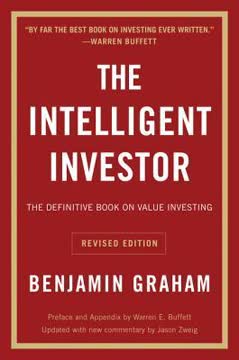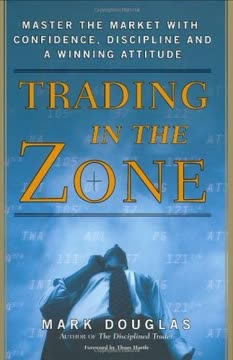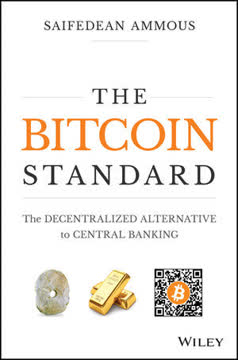Key Takeaways
1. Market-generated information is key to understanding market dynamics
Market-generated information is the pure, unbiased information that comes directly from the market itself.
Objective market data. Market-generated information encompasses time, price, and volume - the fundamental building blocks of market activity. This data provides an unfiltered view of market behavior, free from the biases and interpretations that often accompany traditional analysis.
Comprehensive market view. By focusing on market-generated information, traders can gain insights into the motivations and actions of all market participants across different timeframes. This holistic perspective allows for a more accurate assessment of market conditions, potential turning points, and asymmetric opportunities.
Real-time adaptability. Unlike lagging indicators or fundamental analysis, market-generated information provides real-time feedback on market structure and sentiment. This enables traders to adapt quickly to changing conditions and make more informed decisions about trade entry, exit, and risk management.
2. Timeframes and auctions shape market behavior
Markets are much more understandable if you think of price as simply an advertising mechanism; you want to learn how to gauge the market's collective response to each ad, as it were.
Auction process. Markets function as continuous two-way auctions, with price serving as the advertising mechanism to attract buyers and sellers. The interplay between different timeframes - from scalpers to long-term investors - creates the market's structure and drives price movement.
Timeframe interaction. Understanding how different timeframes interact is crucial for successful trading. Short-term traders may create noise and volatility, while longer-term participants often drive sustained trends. Recognizing which timeframe is in control at any given moment can provide valuable context for trading decisions.
Value discovery. The auction process facilitates the discovery of fair value through the constant exploration of price levels. Traders can gain an edge by identifying when price is moving away from or towards perceived value, and how different timeframes are responding to these movements.
3. Balance and imbalance drive market movements
Markets by their very nature often provide easily identifiable reference points that can assist in identifying advantageous trade location.
Market equilibrium. Balanced markets exhibit a relatively stable distribution of activity around a central value area. These periods of balance create trading ranges and provide opportunities for mean reversion strategies.
Imbalance and opportunity. Market imbalances occur when:
- Inventory becomes skewed (too many longs or shorts)
- New information disrupts the status quo
- Different timeframes disagree on fair value
These imbalances often lead to breakouts, trends, and significant price movements, creating opportunities for directional trades.
Reference points. Key levels such as:
- Previous day's high, low, and value area
- Multi-day balance extremes
- Longer-term support and resistance
Serve as important reference points for identifying potential areas of balance and imbalance.
4. Market Profile visualizes market structure and sentiment
The market profile enables us to see the structure of unfolding market activity.
Visual representation. Market Profile organizes price, time, and volume data into a graphical format that reveals the market's developing structure. This allows traders to quickly assess:
- Value area location
- Price acceptance and rejection
- Strength of trends
- Potential turning points
Volume distribution. The shape of the Market Profile provides insights into the conviction behind price movements. Elongated profiles suggest strong directional conviction, while wide, balanced profiles indicate agreement on fair value.
Real-time analysis. As the Market Profile develops throughout the trading session, it offers a dynamic view of evolving market sentiment. This enables traders to identify shifts in behavior and adjust their strategies accordingly.
5. Successful trading requires context and adaptability
Everything is always different. Context is always changing.
Holistic market view. Successful traders consider multiple factors when assessing market conditions:
- Longer-term trends and market cycles
- Current market balance or imbalance
- Inventory positioning of different timeframes
- Recent price action and volume patterns
- Relevant fundamental and economic factors
Flexible strategies. No single strategy works in all market conditions. Traders must adapt their approach based on:
- Trending vs. bracketing markets
- High vs. low volatility environments
- Changing correlations between markets
- Shifts in dominant timeframes
Continuous learning. Markets are constantly evolving, influenced by new participants, technologies, and global events. Successful traders commit to ongoing education and refinement of their skills to stay ahead of changing market dynamics.
6. Asymmetric opportunities arise from market inefficiencies
Our primary objective, then, is to observe the market's symmetry—or lack of symmetry—and adjust our trading decisions based on an ongoing assessment of the resultant risks.
Risk-reward imbalances. Asymmetric opportunities occur when the potential reward significantly outweighs the risk. These situations often arise from:
- Mispriced securities
- Overreactions to news or events
- Inventory imbalances
- Structural inefficiencies in the market
Identifying asymmetry. Traders can spot asymmetric opportunities by:
- Analyzing market structure through Market Profile
- Monitoring volume patterns and participation
- Recognizing divergences between price and value
- Understanding the positioning of different timeframes
Risk management focus. Rather than trying to predict exact price targets, successful traders focus on managing risk and identifying favorable risk-reward scenarios. This approach allows for consistent profitability even without a high win rate.
7. Day trading demands real-time analysis and quick decision-making
Every day, we begin by asking ourselves What was the market attempting to do yesterday, and how successful was that attempt?
Preparation is key. Effective day traders:
- Review previous day's action and key reference points
- Identify potential scenarios for the current session
- Understand the broader market context and potential influences
Real-time assessment. Throughout the trading day, successful day traders continuously evaluate:
- Market open type (Open-Drive, Open-Test-Drive, Open-Rejection-Reverse, Open-Auction)
- Developing market structure and profile shape
- Volume patterns and participation
- Shifts in market sentiment and momentum
Adaptive execution. Day traders must be prepared to:
- Quickly recognize when market behavior contradicts expectations
- Adjust strategies based on evolving conditions
- Manage positions actively to control risk and maximize opportunity
8. Long-term trends and intermediate auctions provide trading context
Long-term trends generally begin and end in just such intermediate-term auctions.
Trend lifecycle. Long-term trends typically follow a pattern:
- Breakout from a period of balance
- Strong directional movement
- Series of intermediate-term auctions (consolidations)
- Weakening momentum and increased volatility
- Return to balance or reversal
Intermediate-term perspective. Intermediate auctions within longer trends provide:
- Opportunities for trend traders to enter or add to positions
- Potential reversal points for counter-trend traders
- Context for shorter-term trading decisions
Multiple timeframe analysis. Traders should consider:
- Position within the long-term trend
- Stage of the current intermediate auction
- Short-term opportunities within the larger context
9. Volume analysis reveals market conviction and inventory imbalances
Volume was not a consideration in this example, because we only employ overall volume when we can be certain of which direction the market was attempting to auction throughout the day.
Volume confirms direction. Strong volume in the direction of price movement suggests conviction and increases the likelihood of continuation. Weak volume may indicate a lack of participation or potential reversal.
Inventory imbalances. Volume analysis can reveal:
- Short-covering rallies (high volume, rapid price movement, often unsustainable)
- Long liquidation breaks (similar characteristics to short-covering, but to the downside)
- Accumulation or distribution (changes in volume patterns at key levels)
Volume distribution. Analyzing where volume is occurring within the daily range provides insights into:
- Acceptance or rejection of price levels
- Potential for continuation or reversal
- Strength of support and resistance
10. Cognitive biases and emotions impact trading decisions
To be successful, investors must recognize the confluence of evolving factors that will eventually lead to a changing market atmosphere.
Common biases. Traders must be aware of:
- Confirmation bias: Seeking information that supports existing beliefs
- Recency bias: Overweighting recent events or data
- Loss aversion: Taking outsized risks to avoid realizing losses
- Overconfidence: Underestimating risk and overestimating ability
Emotional control. Successful traders develop strategies to manage emotions:
- Following a well-defined trading plan
- Focusing on process rather than outcomes
- Practicing mindfulness and self-awareness
- Maintaining a trading journal to identify patterns in decision-making
Continuous improvement. Traders can enhance their performance by:
- Regularly reviewing and analyzing their trades
- Seeking feedback from mentors or peers
- Studying trading psychology and decision-making science
- Developing routines to maintain emotional equilibrium during market volatility
Last updated:
FAQ
What's Markets in Profile about?
- Market Behavior Exploration: Markets in Profile by James F. Dalton delves into the auction process of financial markets, linking it to human decision-making. It posits that while markets are rational, human behavior often leads to irrational trading decisions.
- Auction Process Emphasis: The book highlights the importance of understanding the auction process, which determines market prices. It introduces the Market Profile as a tool to visualize and interpret market behavior.
- Risk Management Focus: A significant theme is managing risk by identifying asymmetric opportunities. The authors provide strategies for traders to capitalize on these opportunities by understanding market structure.
Why should I read Markets in Profile?
- Practical Insights: The book offers practical insights into trading and investing, helping both novice and experienced traders improve decision-making. It provides a framework applicable across various asset classes.
- Unique Perspective: Combining psychological insights with technical analysis, the authors present a holistic approach that can enhance trading strategies and risk management techniques.
- Real-World Examples: Filled with real-world examples and case studies, the book illustrates concepts in a relatable manner, making it easier to apply theories to actual market situations.
What are the key takeaways of Markets in Profile?
- Auction Process Understanding: Recognizing how prices are determined through supply and demand can lead to better trading decisions. Understanding the auction process is crucial.
- Market Profile Tool: The Market Profile tool helps visualize market structure and identify value areas, aiding traders in understanding price reversion or breakout points.
- Risk and Opportunity: Identifying asymmetric opportunities where potential rewards outweigh risks is emphasized. This involves understanding market behavior and participant psychology.
What is the Market Profile method discussed in Markets in Profile?
- Visualizing Market Structure: The Market Profile method organizes price, time, and volume data into a visual format, helping traders understand market behavior and identify value areas.
- Identifying Trends and Brackets: It helps distinguish between trending and bracketing markets, allowing traders to make informed decisions about entry and exit points.
- Real-Time Context: Providing real-time context for market activity, the Market Profile enables traders to assess the current market state and make timely decisions.
How does Markets in Profile address risk management?
- Asymmetric Opportunities: The book emphasizes identifying opportunities where potential rewards outweigh risks, involving market condition analysis and participant psychology understanding.
- Understanding Market Behavior: By understanding market behavior during different conditions, traders can better manage risk exposure. Strategies for recognizing trade entry and exit points are provided.
- Continuous Learning: Encouraging continuous learning and adaptation to changing market conditions is crucial for effective risk management and long-term trading success.
What are the different timeframes discussed in Markets in Profile?
- Scalpers: Operating on the shortest timeframe, scalpers make numerous trades daily, capitalizing on small price movements and relying on order flow and market depth.
- Day Traders: Entering and exiting positions within the same day, day traders focus on short-term price movements, often using technical analysis and market-generated information.
- Intermediate and Long-Term Traders: Holding positions for days to years, these traders employ different strategies and risk management techniques based on their timeframe.
How does Markets in Profile explain the transition from trends to brackets?
- Bracketing Process: Trends transition to brackets as the market seeks a new value area, involving auctions that test price movement extremes.
- Volume Analysis: A decrease in volume as a trend matures signals a potential bracketing phase, indicating readiness for market consolidation.
- Market Behavior: Understanding different timeframe behaviors during this transition is crucial. Traders must recognize trend momentum loss and prepare for reversals or consolidations.
What role does human psychology play in trading according to Markets in Profile?
- Irrational Decision-Making: Human psychology often leads to irrational trading decisions, creating market inefficiencies. Traders must be aware of their biases and emotional responses.
- Behavioral Finance Insights: Emotions like fear and greed impact trading behavior. Understanding these psychological factors can help traders make more rational decisions.
- Self-Awareness: Emphasizing self-awareness, the authors suggest recognizing emotional triggers and biases for better decision-making and improved trading outcomes.
How can I apply the concepts from Markets in Profile to my trading strategy?
- Utilize Market Profile: Incorporate the Market Profile tool to visualize market structure and identify value areas, aiding in informed decision-making based on real-time data.
- Focus on Risk Management: Apply risk management principles by identifying asymmetric opportunities, ensuring potential rewards justify trade risks.
- Adapt to Market Conditions: Stay flexible, adapting strategies based on current market conditions. Recognize trending versus bracketing markets and adjust approaches accordingly.
What are the different types of market openings discussed in Markets in Profile?
- Open-Drive: Characterized by aggressive auctioning in one direction, indicating high confidence and often leading to significant daily price movement.
- Open-Test-Drive: The market tests beyond a reference point before reversing, indicating initial confidence lack but potential profitable trades if monitored.
- Open-Rejection-Reverse: Features a market opening, trading in one direction, then reversing sharply, signaling strong opposite activity and trading opportunities.
What is the significance of balance and imbalance in Markets in Profile?
- Market Dynamics: Balance refers to price stabilization periods, while imbalance indicates strong directional moves. Understanding these helps anticipate price movements.
- Trading Strategies: Traders should fade moves to balance area extremes and look for breakouts when out of balance, enhancing trading performance.
- Volume Analysis: Volume is crucial in assessing balance and imbalance. Higher volume during movements indicates stronger conviction and potential opportunities.
What are the best quotes from Markets in Profile and what do they mean?
- "You can manage risk but not return.": Emphasizes focusing on risk management, suggesting traders control risk exposure but cannot guarantee returns, highlighting discipline.
- "Markets are rational, people are not.": Encapsulates the theme that market mechanisms are efficient, but human emotions and biases lead to irrational decisions, aiding volatility navigation.
- "Change is the great common denominator.": Reflects the constant market change, encouraging traders to be adaptable and responsive to evolving conditions for a competitive edge.
Review Summary
Markets in Profile receives mostly positive reviews, with readers praising its insights into market psychology and trading strategies. Many consider it essential reading for serious traders, offering a unique perspective on market movements. The book's focus on the market profile concept is seen as valuable, though some find it outdated. Critics argue it lacks substantial content. Readers appreciate Dalton's analogies and emphasis on reactive trading over prediction. Overall, it's viewed as a significant contribution to understanding market dynamics, despite a few dissenting opinions.
Similar Books










Download PDF
Download EPUB
.epub digital book format is ideal for reading ebooks on phones, tablets, and e-readers.




